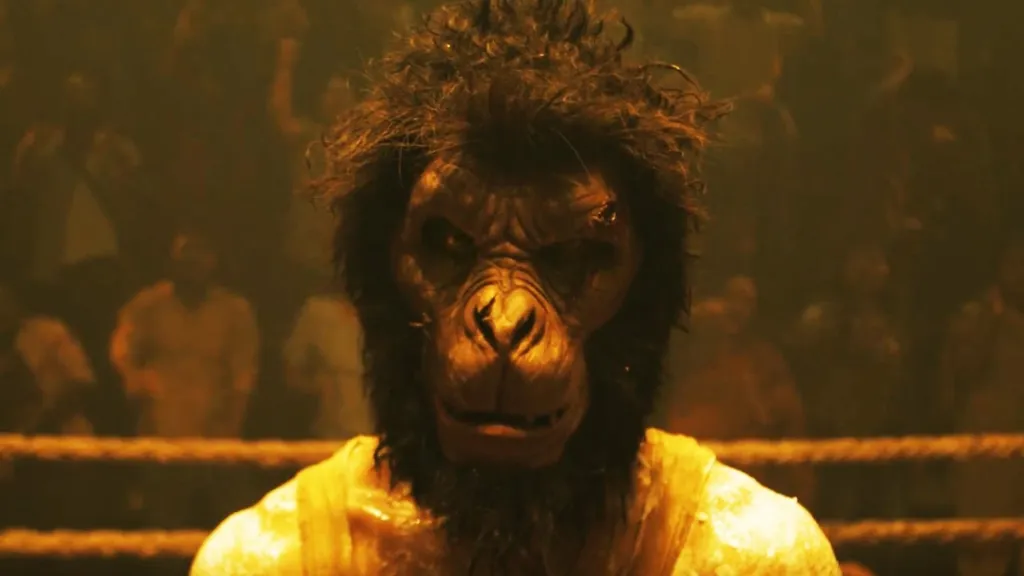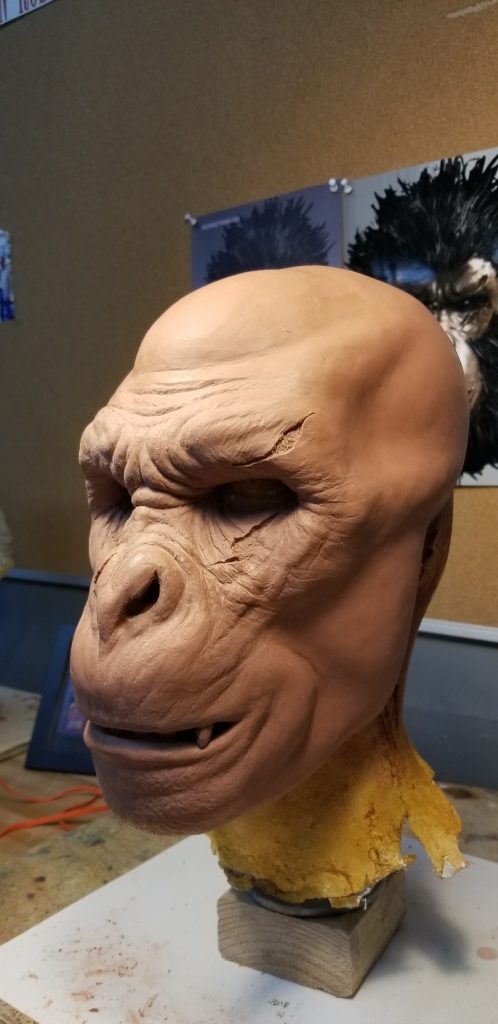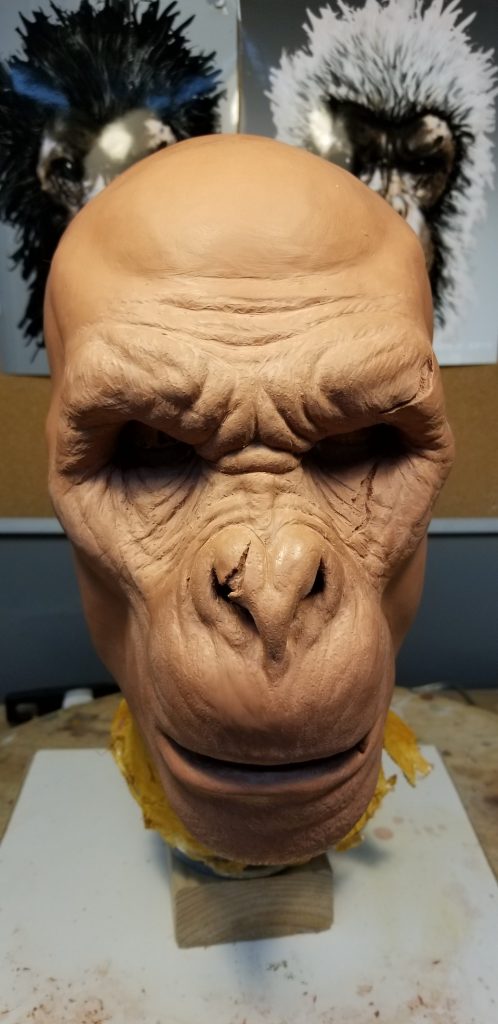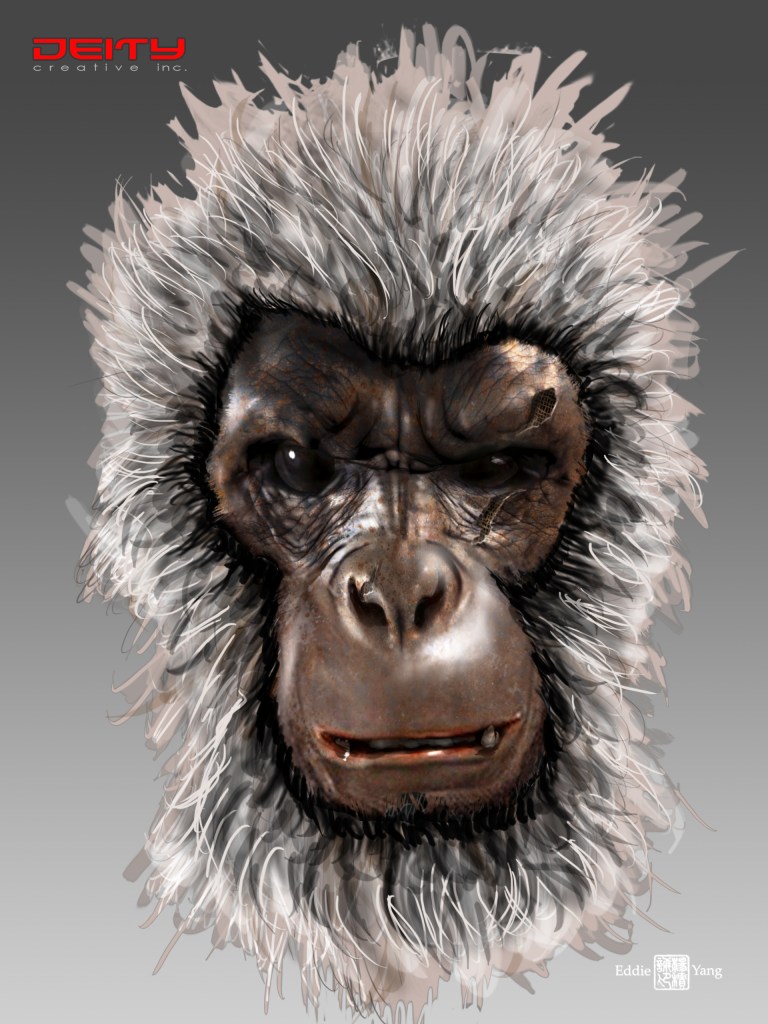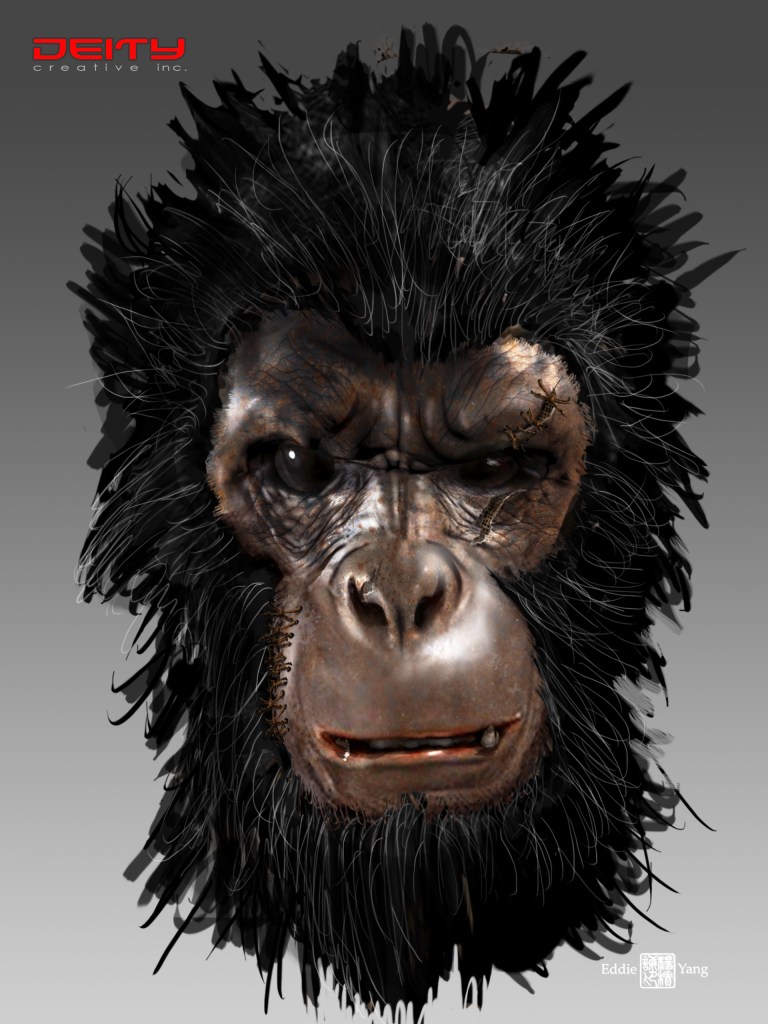ComingSoon Editor-in-Chief Tyler Treese spoke to Monkey Man mask designer and Deity Creative Inc. founder Eddie Yang, who worked with director Dev Patel to create the two masks scene in the decorated actor’s directorial debut. Yang discussed the creative collaboration, making it fit Patel’s vision, and discussed the symbolic white mask. Monkey Man is now available to rent or buy at home from Universal Pictures Home Entertainment.
“Inspired by the legend of Hanuman, an icon embodying strength and courage, Monkey Man follows Kid, an anonymous young man who ekes out a meager living in an underground fight club where, night after night, wearing a gorilla mask, he is beaten bloody by more popular fighters for cash,” reads the official synopsis. “After years of suppressed rage, Kid discovers a way to infiltrate the enclave of the city’s sinister elite. As his childhood trauma boils over, his mysteriously scarred hands unleash an explosive campaign of retribution to settle the score with the men who took everything from him.”
Tyler Treese: How was the process of coming up with Monkey Man’s mask?
Eddie Yang: Dev came in with very strong opinions and he actually had like a Halloween mask that he really liked. So we started there as kind of a shortcut with getting to exactly what he wanted. He even, I think, was thinking of using the Halloween mask itself, which is actually pretty crude. So when I first talked with him, it was more about finding out how good he wanted it versus crude. So, we kind of had a back-and-forth of that, but he had a very strong vision in his mind of what he wanted it to look like.
Yeah, because the character wouldn’t be able to afford a super cool mask early on. So how was it making the mask not look too high quality and making it fit the character?
Yeah, it’s, it is walking a fine line and just kind of really nitpicking things and going back and forth with him. And I think this is probably one of the first times that he’s worked with a character-type design. We had several Zoom calls and discussed it. I even had some designs that were, I think, much more of the Indian culture, let’s say. It was kind of like a bluish skin, much more bright colors, but he, like I said, had a very strong vision, and we kind of went in this direction, and every little detail was talked over and molded over.
It seems clear that Dev had a very strong vision for Monkey Man’s mask. Does it kind of vary from client to client? I figure some are just sort of like, “Hey, we trust your expertise,” and others have more of an idea. What kind of stood out about Dev there?
Yeah, I’ve worked with James Cameron, and whatever he says goes because he has that artistic vision. He’s an artist himself, an amazing artist. Then you have sometimes first time directors who kind of know what they want. They know what they don’t want, let’s say. You kind of extract it, and you do variations on designs and things. Through that process you kind of get a little bit of what that director’s flavor is, or taste or expertise is. So some people, you hold their hand a lot, and then some people you don’t.
Dev had a very clear vision of what he wanted, which made it a lot easier, like I said. We just kind of had to nudge the details and say, how far do you want to go with this? How damaged do you want the mask? He wanted to see it kind of with blood on it and what that looked like. So yeah, he kind of wanted to see it in all different aspects of what he was thinking for the film, and I had no idea what he was thinking as far as putting the blood on it and all that stuff. You just had to trust that he knew exactly how he was gonna use it.
How many different variations of the masks were made for filming?
We made four, I believe, including one with the white hair after it was kind of bleached.
I was curious about the white mask. We see him bleach it in the film. Is that how you achieved that look there, or was it white fabric?
We cheated it and, and made it with white hair. Because he knew exactly how he was gonna use it. He explained the scene and how he was gonna dip it in this liquid and all that stuff. So we were very well prepped for that. Most of the focus was on the dark-haired mask because that was gonna be featured more, and he was talking about several stunts. So yeah, we wanted at least one backup. Then I think he had production meetings, and everybody kinda came to the conclusion that, yeah, it should be three of these, and the white one would be seen only very briefly.
We see the black mask in multiple fight scenes in that arena. How is it making it durable to where it can withstand getting in some action?
After working in the industry for this long, you kind of know what materials you should use. This was just very similar to what they would make a Halloween mask out of. It’s just latex rubber, and it was supposed to look like a mask. So, latex rubber is used throughout the Halloween industry and in making Halloween masks. So, it’s extremely durable, very hard to tear or anything like that. So it kind of worked in our favor that it needed to resemble a mask, and it was the same material.
You mentioned that there was only one white mask made. There were some theories that maybe scenes got cut with the white mask because it looks amazing, but it’s only in the film for a couple of sequences, and he takes it off before fighting with it. So it was always just one?
Yeah, it was always one. I think he knew he was gonna use it very briefly, and it’s symbolic. I only now realize, after having seen the film, that it was based on that monkey that you see very briefly with the white hair and the dark roots and stuff. He showed me photos of that, and I didn’t realize they had already shot that ’cause it, it looked like it was the same photos that we based the hair color.
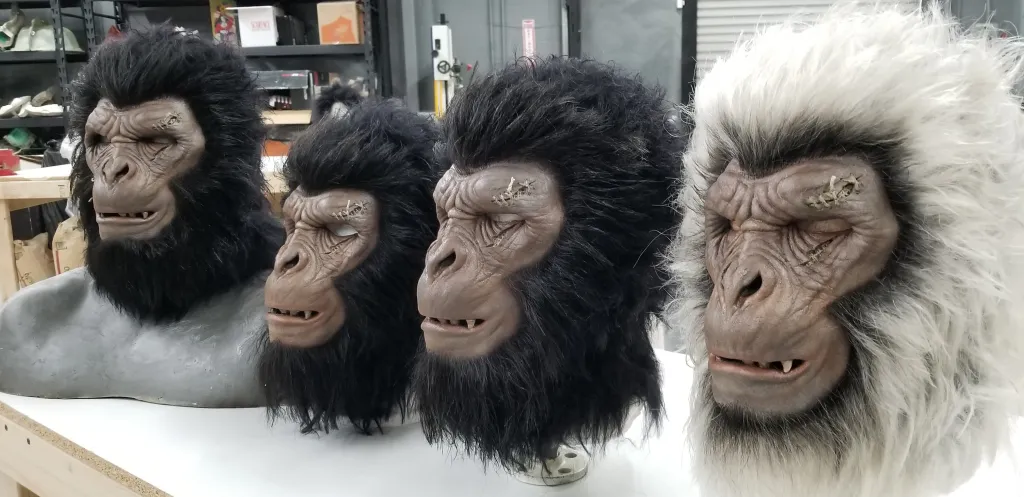
The response the film has received has been great. How’s it been seeing the response to Monkey Man’s mask and seeing people checking out the film?
I’m super excited about the response. We had no idea what the film was gonna be when we started. I just knew it was Dev Patel, and I’m a huge fan of his acting career. He only stars in top-notch films, and I’ve seen a lot of them. Lion and all that stuff. I think we were working on this maybe four or five years ago, and then we’re expecting it to be released the year after, maybe two years after. After the third year, we’re just like, “OK, I don’t know if or when this is coming out.” And to read some of the trade news, seeing that … Jordan Peele picked it up.
So it’s been a while, let’s say, since we worked on it, and to see the response from the audience and fans, it’s awesome. And to see the response from myself actually because I didn’t know it was like this much of an action movie. I thought he was making something very artsy that would maybe play very limitedly, but it’s a genre that I love personally. When I saw the trailers for it, I was like, holy crap, this is amazing. I was excited to see it. So I can imagine how everybody else felt.
You mentioned working with James Cameron. When you’re working with an artist like him, who obviously has a vision and that attention to detail and is so hyper-focused on the details, how does that kind of impact your own team’s work when you have that hyper-specific auteur like James Cameron?
Yeah, I worked for James when I was at another studio, Stan Winston Studio. It was on Avatar, and I had already heard about him, a huge fan of his films obviously, and knew that he was very artistically talented as far as designing every aspect. I mean, what was amazing about meeting him is he spoke to us as if he was special makeup effects, a prosthetic creator himself using the same terms. He could probably do it on his own, so that was an amazing experience, and it makes our job a lot easier when he talks to you with your terms, knowing the materials that you use. Because you can’t really stray from what he wants when he is that specific, and it saves time, it’s more efficient, and you get right to work and can produce something knowing exactly what he wants.
